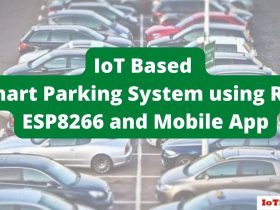Amazon and IoT in 2025: How Smart Tech is Powering Smarter Customer Experiences
When it comes to tech innovation, Amazon remains a name that’s hard to miss. Whether it’s cloud computing, smart devices, AI integration, or e-commerce transformation, Amazon is always pushing boundaries—and one technology that’s been pivotal to their success story is the Internet of Things (IoT).
In 2025, Amazon is leveraging IoT more extensively than ever before to enhance user experience, improve operational efficiency, and offer futuristic solutions across both consumer and enterprise levels.
Let’s dive into how Amazon is using IoT in 2025—and why it’s setting benchmarks for businesses across the globe.
What is IoT and Why It Matters?
Before we zoom into Amazon’s strategy, let’s understand IoT in simple terms. The Internet of Things (IoT) refers to the network of interconnected physical devices embedded with sensors, software, and other technologies that collect and exchange data over the internet.
From smart thermostats to AI-powered warehouse robots, IoT is the invisible thread that connects the digital and physical worlds.
How Amazon is Integrating IoT in 2025
Smart Customer Support Beyond Traditional Models
Amazon has transformed how it supports its massive customer base using IoT-driven automation. Unlike conventional customer service models, Amazon uses real-time device data, AI algorithms, and predictive analytics to offer proactive support. For example:
- Echo and Alexa devices automatically log and report issues.
- Smart home devices can be diagnosed remotely.
- IoT feedback loops allow Amazon to predict user needs and resolve problems before customers even notice.
This move from reactive to predictive support has redefined service standards in online retail.
AWS IoT: The Backbone of Amazon’s Smart Ecosystem
A core enabler of Amazon’s IoT initiatives is AWS IoT, part of the Amazon Web Services (AWS) cloud platform. It powers millions of devices across homes, businesses, and industries.
Key Tools and Services in 2025:
- AWS IoT Core: Enables secure, bi-directional communication between devices and the cloud.
- AWS IoT Greengrass: Allows devices to operate locally with intermittent cloud connectivity.
- AWS IoT Device Defender: Ensures end-to-end security, monitoring, and threat detection for connected devices.
Together, these services enable smart homes, industrial automation, and logistics optimization.
Smarter Warehousing and Logistics
Amazon’s fulfillment centers are now fully IoT-enabled ecosystems. Here’s how they use it:
- Kiva robots powered by IoT navigate and manage inventory autonomously.
- Real-time tracking sensors ensure accurate shipment status.
- Predictive maintenance is done on warehouse machinery using sensor data.
- Cold chain monitoring in groceries ensures freshness with IoT sensors.
This integration improves delivery speed, accuracy, and cost-efficiency—all vital to Amazon’s promise of next-day delivery.
Omnichannel Experience with IoT Integration
Amazon has moved far beyond the idea of multichannel interaction. In 2025, they offer an omnichannel experience where data from voice assistants (Alexa), smart apps, website browsing, and even physical Amazon Go stores are integrated seamlessly.
Using AWS IoT and Amazon Personalize, the company tailors product recommendations and support across devices. Whether you’re browsing on mobile, shopping via Alexa, or visiting an Amazon Fresh outlet, the experience is consistent and hyper-personalized.
AWS IoT Analytics: Making Sense of Big Data
Data alone doesn’t deliver value—it’s insights that matter.
With AWS IoT Analytics, Amazon analyzes petabytes of data streaming from its smart devices. This helps:
- Optimize supply chains.
- Monitor product usage in real-time.
- Improve energy efficiency in smart homes.
- Deliver context-aware promotions based on user behavior.
IoT data is integrated with AI/ML models to deliver smarter outcomes across the business.
Custom IoT Applications with Things Graph
In 2025, Amazon IoT Things Graph continues to simplify the creation of IoT applications using a visual workflow editor. Developers can drag and drop different devices, services, and logic functions to quickly build apps without heavy coding.
This has allowed Amazon and third-party developers to:
- Build applications tailored for home automation.
- Create real-time inventory alerts.
- Develop interactive customer interfaces for smart products.
The result? Faster innovation and better user experiences at scale.
Real-World Example: Smart Homes & Reordering
Imagine a scenario: your smart fridge detects that your milk is running low. It automatically checks prices on Amazon, places an order with your preferred delivery schedule, and you receive it the next morning.
This isn’t fiction—it’s already happening, and IoT is the driving force.
Security First: IoT Without Compromise
In an era where data privacy is paramount, Amazon prioritizes security across its IoT systems. With end-to-end encryption, multi-factor authentication, and real-time threat monitoring, devices remain safe—even as they interact with multiple systems and cloud environments.
Looking Ahead: Amazon’s IoT Vision Beyond 2025
As IoT continues to mature, Amazon is focusing on:
- Edge AI for faster local processing
- Sustainable IoT with energy-efficient devices
- Interoperability standards to support cross-platform integration
- Healthcare IoT with Alexa-enabled health check-ins
This evolving ecosystem will continue to power innovations across retail, logistics, entertainment, and beyond.
Final Thoughts on How Amazon Uses IoT in 2025
Amazon’s use of IoT in 2025 isn’t just about gadgets—it’s about creating an ecosystem that’s intelligent, responsive, and adaptive. Whether it’s delivering groceries faster, automating your home, or making customer support seamless, IoT is the silent engine powering it all.
Amazon has proven that IoT is not just a buzzword—it’s a business accelerator.
See also: Microsoft Azure Cloud tutorial for Beginners -Azure Basics
What’s Your Take?
Do you use any Amazon IoT-enabled devices in your daily life? How do they impact your experience? Drop your thoughts in the comments below!
Also, don’t forget to subscribe to our YouTube channel for IoT tutorials, trends, and tech updates.










Leave a Review